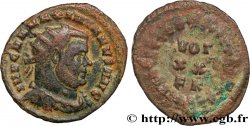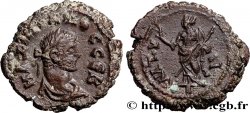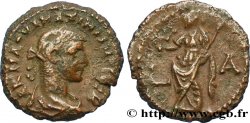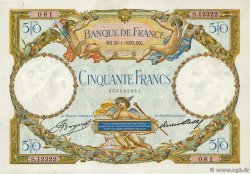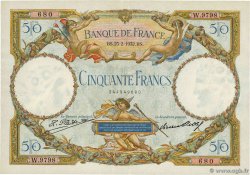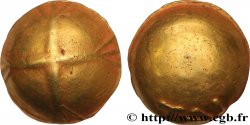brm_566965 - MAXIMIANUS HERCULIUS Aurelianus
Not available.
Item sold on our e-shop (2024)
Price : 110.00 €
Item sold on our e-shop (2024)
Price : 110.00 €
Type : Aurelianus
Date: 293
Mint name / Town : Cyzicus
Metal : billon
Millesimal fineness : 50 ‰
Diameter : 22 mm
Orientation dies : 6 h.
Weight : 3,78 g.
Officine: 2e
Coments on the condition:
Monnaie centrée. L’exemplaire a conservé la majorité de son argenture superficielle. Joli revers, finement détaillé. Patine grise
Predigree :
Cet exemplaire provient de la vente Gorny 181, n° 2442 et de la collection Daniel Compas “antoniniani et aureliani exceptionnels”
Obverse
Obverse legend : IMP C M A MAXIMIANVS AVG.
Obverse description : Buste radié, drapé et cuirassé de Maximien Hercule à droite, vu de trois quarts en arrière (A2).
Obverse translation : “Imperator Cæsar Marcus Aurelius Maximianus Augustus”, (L’empereur césar Marc Aurèle Maximien auguste).
Reverse
Reverse legend : CONCORDIA MI-LITVM/ S// XXI.
Reverse description : Maximien et Jupiter debout face à face ; Maximien est debout à gauche tourné à droite, vêtu militairement ; Jupiter est debout à droite, tourné à gauche et il tend une victoriola à l’empereur.
Reverse translation : “Concordia Militum”, (La Concorde des soldats).
Commentary
Rubans de types 3 aux extrémités bouletées.







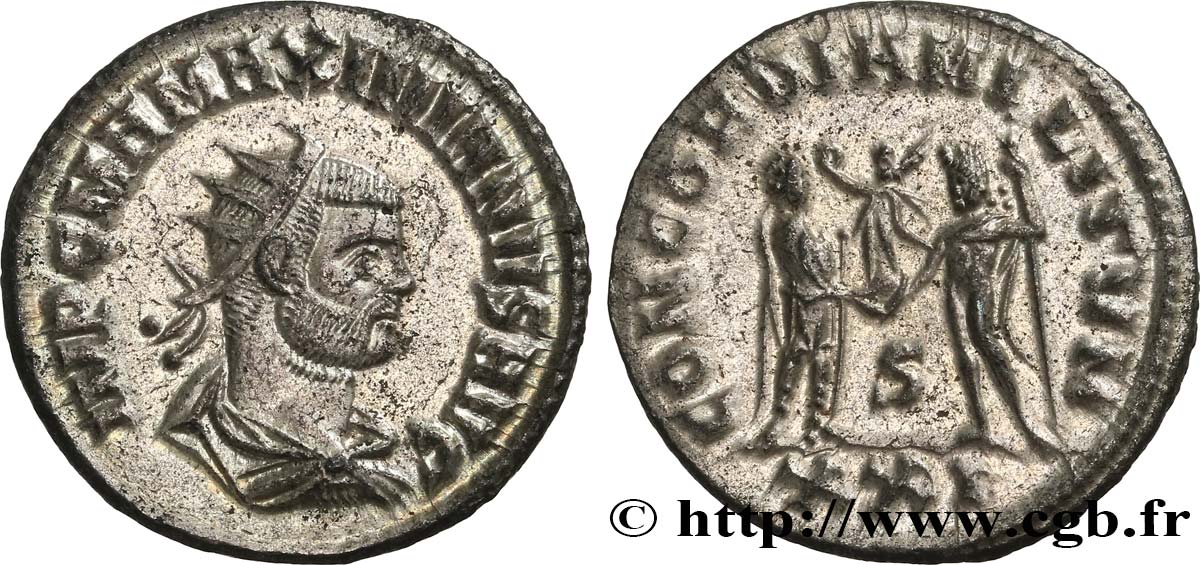
 Report a mistake
Report a mistake Print the page
Print the page Share my selection
Share my selection Ask a question
Ask a question Consign / sell
Consign / sell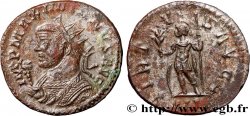
 Full data
Full data